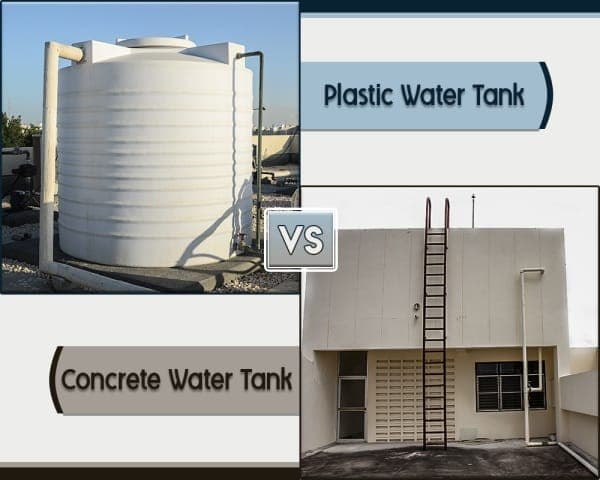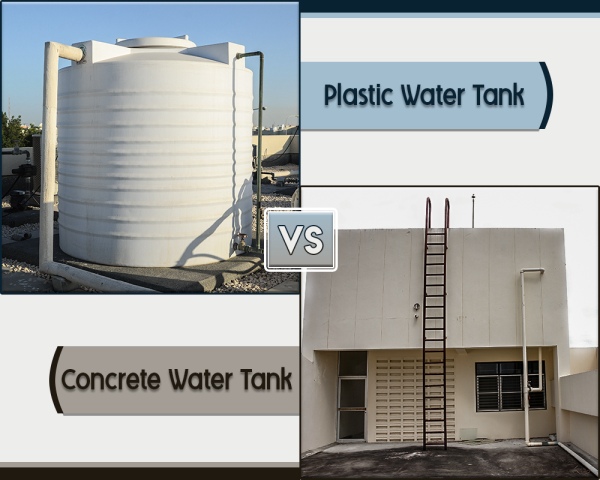
Safe potable water free from any impurities is a basic need. In today’s pollution-prone environment, water hygiene a must. The shortage of drinking water is a worldwide issue but more so in developing countries.
Water is the basic necessity. All of us need water during the whole of the day to meet our day-to-day needs. However, in most of the developing countries, the municipality or local government does not supply adequate water throughout the day. Hence, it’s critical that homeowners invest in a water tank for house water supply at all times. It is also equally important for multi-storey apartment building where the water storage is a must as the municipality supply might not have that pressure head so that it can reach the terrace of a high-rise building. Hence first you have to store water in the underground tank and then pump it to overhead tank on the terrace. According to the ‘National Building Code of India (NBC 2005)’ a minimum of 70 to 100 litres per head per day water may required for domestic needs for residence.
There are always some locations in a town where the volume and pressure of water are insufficient for supply to each house. That is why it is so important to have a water storage tanks in your house. Residential water tanks and overhead water tanks have become increasingly important as they make it easy for people to have an uninterrupted 24 x 7 hours water supply for drinking, cooking, gardening, car washing, and washing clothes. When you choose a water storage tank for your house, consider your family size and your lifestyle. Further, there are several types of storage tanks available today. You have plastic water storage tanks, potable water storage tanks, RCC or concrete water tanks among others.
When we compare plastic versus concrete water tanks, you should consider factors like the material, cost, and durability of the tank among others. These tanks are quite popular and available in different styles and sizes. Therefore, this article gives you a brief comparison of plastic vs concrete water tanks, allowing you to make the most suitable choice for your household.

Plastic vs Concrete Water Tanks
01. General
- Nowadays, plastic water storage tanks are extensively preferred as they are light-weight, leak-proof, rustproof, durable, economical, and require low maintenance. These tanks are available in a circular and cubical shape.
- Concrete water tanks are the oldest types of water tanks. They are sturdy and durable and available in a variety of shapes, such as rectangular and circular.
02. Composition
- Usually made of high-density polyethylene. It does not require any additional waterproofing.
- Made using reinforced cement concrete or ferrocement. It needs additional waterproofing over and above RCC walls & slabs, as RCC in itself is not waterproof.
03. Uses
- It is used for storing water for residential homes and multi storied apartments.
- It is used for storing water for residential homes and multi storied apartments.
04. Advantages
- They are leak-proof; hence, you do not have to fear issues caused by leakage as compared to an RCC water tank that would need to be checked for leakage at least for the first few years.
- It is light in weight as compared to the RCC water tank and hence can be moved manually in any position. It is easily portable. So, its location can be changed from one floor to another floor or one building to another, i.e. If you raise additional floor in your house, you can shift it from lower floor to upper floor.
- The plastic water tank doesn’t corrode. It is rustproof as compared to the RCC water tank that needs to be maintained regularly.
- Since the tank is watertight, the contents remain free from dirt. Hence, it is more hygienic as compared to concrete water tanks.
- It is less expensive.
- We can easily increase the water capacity by connecting an additional water tank to the existing one.
Also Read: Is Plastic Water Tank Safe?
- They are more durable as compared to the plastic water tank.
- If properly maintained, they last for several years.
- It keeps water cooler as compared to the plastic water tank.
- It is easy to clean.
05. Disadvantages
- It is difficult to clean.
- Though these tanks are lightweight they can turn brittle over time owing to UV radiation. Usually, plastic is not stable in the presence of UV radiation. However, the advancement in the field of material chemistry has led to the introduction of better-quality durable plastic water tanks.
- In the summer, the water gets and stays hot for a long time. Hence, most people don’t prefer a plastic water tank. One way of overcoming this is to enclose the tank with brick walls, thereby protecting it from the solar radiations. However, that’s an additional cost.
- They are heavy-weight compared to the plastic water tank.
- The construction of a concrete water tank is time-consuming.
- They aren’t rustproof. Hence, they are prone to corrosion and subsequent leakage issues.
- If the water in the tank is slightly acidic, it can leak calcium from the tank into the water. This makes the water hard, affecting its taste and utility.
- If it is not properly constructed, the structure may crack, causing water leakage in the future.
- Further, the chances of cracks in these types of tanks are high as there are multiple joints involved in its construction and there’s a lack of availability of a skilled workforce. Hence, leakages and cracks are a part of concrete water tanks, demanding regular maintenance.
- The presence of light may cause the growth of algae in the stored water which may pollute the water.
- The tank needs to be repaired and maintained on a regular basis.
06. Natural Disaster
- During a cyclone or a storm, if the plastic tank is empty or partially-filled, the tank may get dislocated from its original position (owing to its lightweight).
- However, it is safe during the earthquake due to its lightweight and flexible properties.
- During a cyclone, a concrete water tank is stable because it’s sturdy and heavy.
- During an earthquake, cracks may appear on the tank surface. If the earthquake is intense, the tank may collapse entirely, if not designed adequately.
- A concrete water tank on the terrace causes vertical asymmetry from a configuration point of view for resisting earthquake forces. Hence, adequate care should be taken when designing the tank, failing which there will be damages.
- During the Bhuj earthquake, in most of the load-bearing houses with G+0, G+1 storeys, the staircase cabin and the water tank were severely damaged while the house was more or less safe.
Also Read: Different Types of Natural Disasters
07. Properties
(a) Durability
- Plastic water tanks are less durable as compared to concrete water tanks.
- Concrete water tanks are more durable as compared to plastic water tanks.
(b) Flexibility
- Its connection is flexible.
- Its connection is rigid.
(c) Strength (Breaking Strength)
- It has a low breaking strength compared to the RCC water tank. If some heavy material falls on the tank, it can break easily.
- It has a high breaking strength compared to the plastic water tank.
(d) Colour Resistance to UV Light
- It has a low resistance to UV light. Constant exposure of UV light, which is usually the case in most houses, the colour of the tank may fade and the tank may turn brittle causing it to crack eventually.
- It has high resistance to UV light. It is not affected by the sun, except that it expands and contracts depending on the heat.
08. Installation
- It is easy to install as compared to RCC water tank due to its lightweight. Therefore, most households today prefer investing in a plastic potable water storage tank.
- More skilled persons are required to construct and maintain it. Hence construction and repair isn’t easy.
09. Maintenance
- They require less maintenance compared to concrete water tanks. They are easy to clean.
- They require more maintenance compared to plastic water tanks. You need skilled hands to clean them.
10. Size
- Plastic water tanks come in various sizes, from 1000 litre, 1500 litre, 3000 litre, to 50,000 litre and more.
- Plastic loft tanks are also available in the capacity of 200 litre to 1000 litre. They are usually installed inside the house on the loft or mounted on the walls.
- The size of a concrete water tank depends on the availability of the space. But they can be of any size based on your household needs.
11. Cost
- The price of the plastic water tanks will vary as per the size of the tank. It approximately ranges from Rs. 5 to 10 per litre.
- The cost of the concrete water tanks is high as compared to the plastic water tanks. It depends on the size of the tank and its location. The higher the terrace the higher is the labour cost. You can expect it to cost you around Rs. 10 to 15 per litre.
12. Manufacturers
- The standard manufacturers of plastic tanks are Sintex, Purvi, Finolex, and National Plastics among others.
- It is constructed by a local contractor and fabricated on site.
Special Comments
The choice of the water storage tank for your house depends on your requirement of the water, your family size, lifestyle, and your budget. Nowadays, people use plastic water tanks rather than concrete water tanks because it is lightweight and less costly. The information shared above will help you make the right choice for your household.































